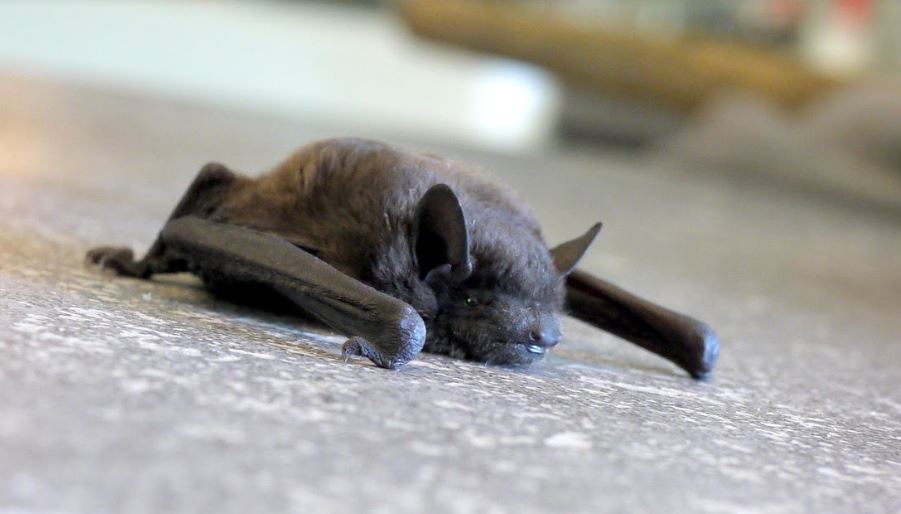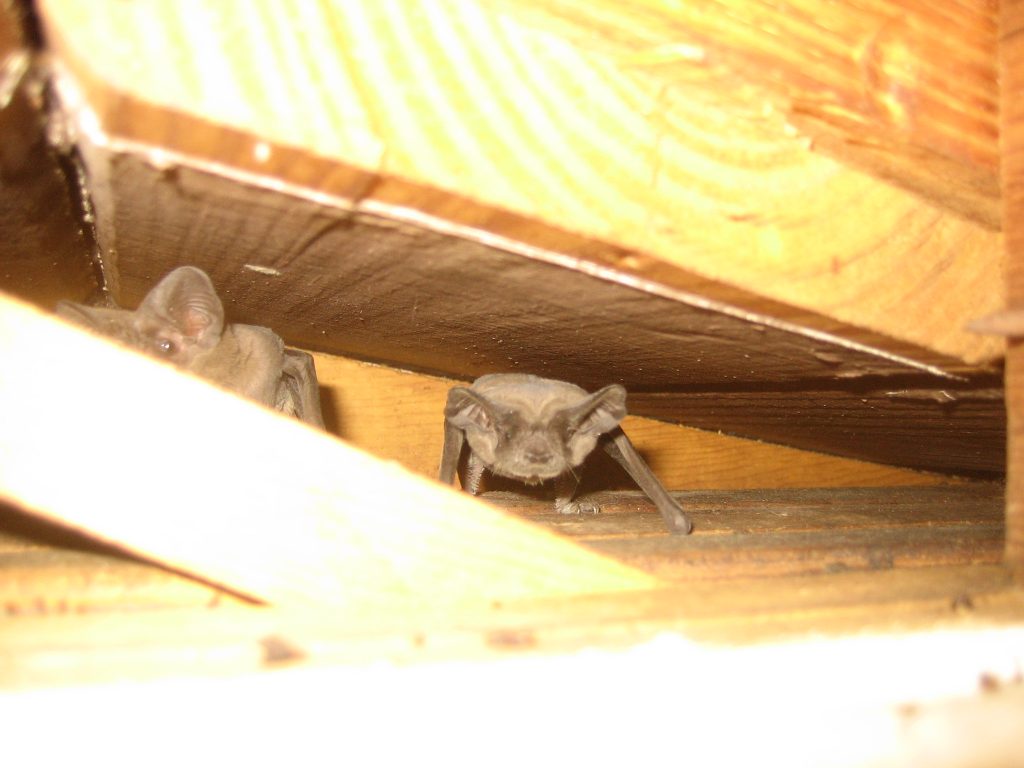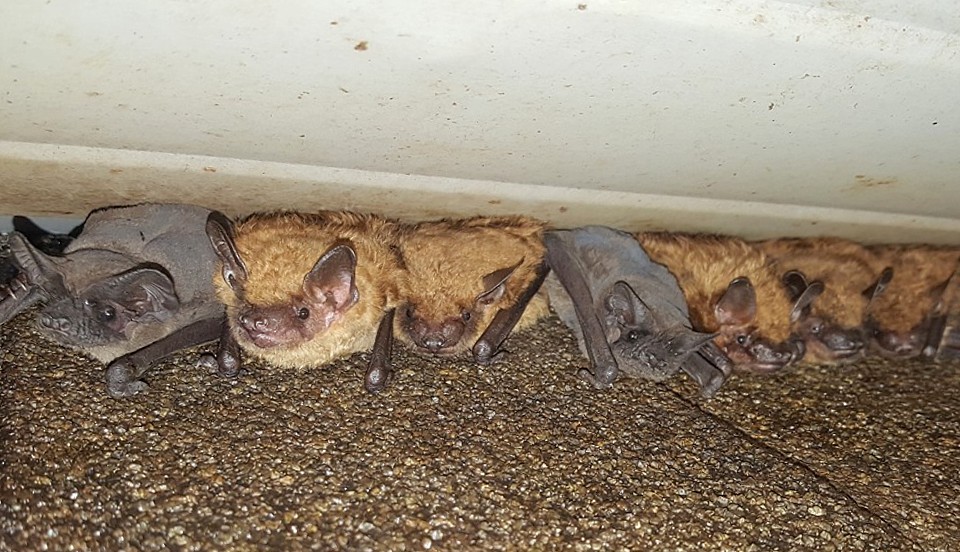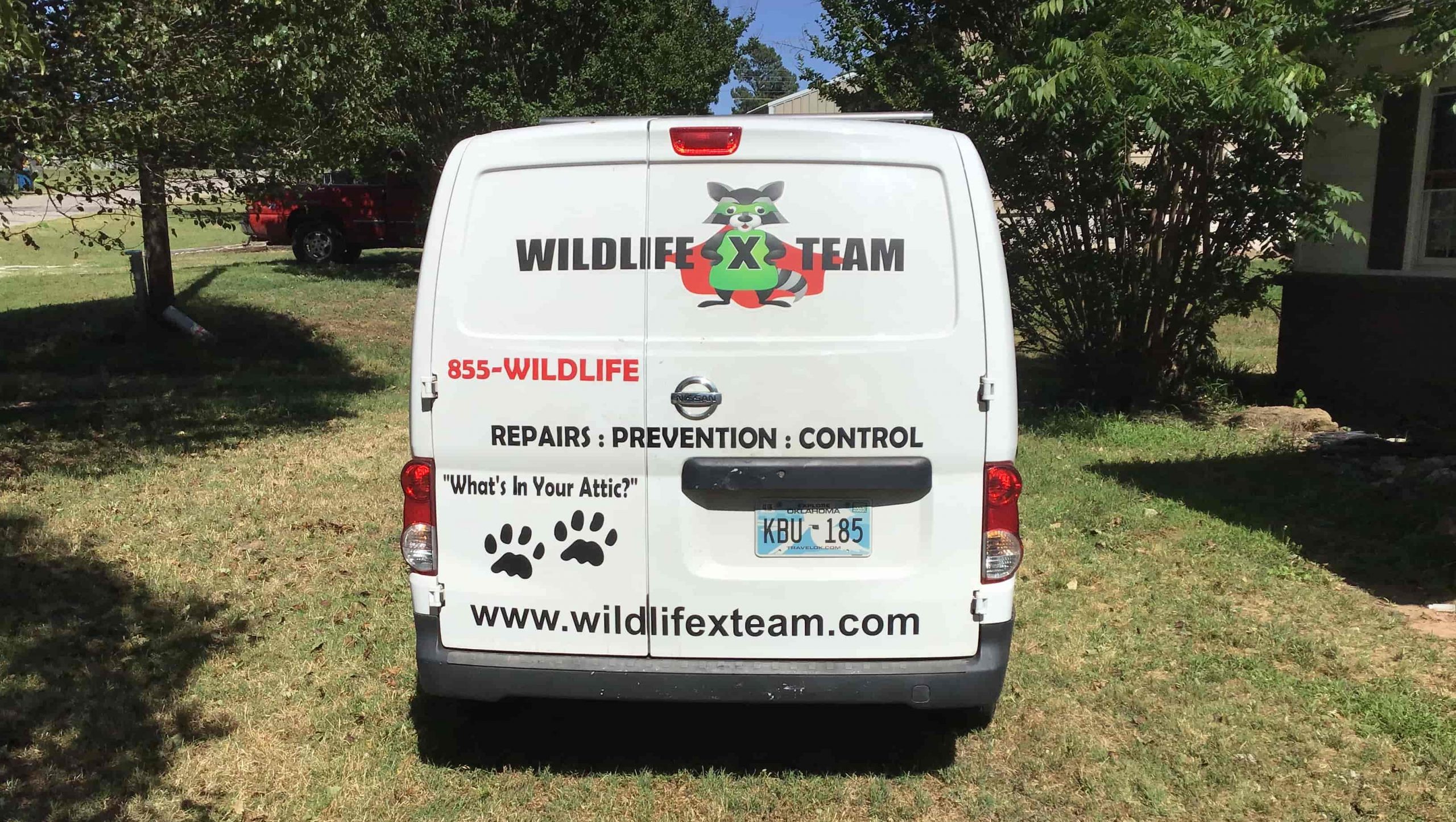
Call for Your Exclusive Wildlife Inspection Report.®
Bat Removal
As scary as they might look or popular media paints them out to be, bats are benign and even timid creatures. Despite the spookiness they invoke, we need them! Many bats species feed on insects, like mosquitoes, helping to limit their population. Just one little brown bat can catch up to 1,000 mosquito-sized insects in an hour, while a nursing mother eats about 4,500 insects per night. Other bat species like the Mexican long-tongued bat feed on nectar and help in the pollination of flowers. Over 500 plant species rely on bats to pollinate their flowers. Some of them include mango, durian, and guava.
Although bats are impressive, they can quickly become a problem when they conflict with humans. Bats love to reside in warm, dark, and high places. That’s why they reside on treetops, caves, under bridges, and abandoned houses. However, they sometimes find their way into people’s homes, residing mostly commonly in the attic, crawlspaces, or chimney. Here are some of the problems caused by them once they pick up residence:
- Noise disturbances, especially if it is a large colony.
- Accumulation of their poop (guano), which is highly corrosive and can damage metal surfaces.
- The terrible odor from their waste.
- Health concerns, such as rabies or histoplasmosis.
At Wildlife X Team Tulsa, we can help you effectively remove bats from your attic, chimney, or any other place they’re residing in your property.

Bat Removal Process
While there are about 47 bat species in the United States, only 26 species are found in Oklahoma. Since bats are a protected species, a license is required before they can be removed. Moreover, the bat removal process is not as straightforward as you would think. It depends on a variety of factors like the type of species, the architecture of the house, the size of the colony, the number of entry points, and the season, among many others. That’s why you should seriously consider hiring a professional wildlife company like Wildlife X Team Tulsa to attain optimal results.
Here are the stages in the bat removal process:
Inspection
A full inspection of the building needs to be carried out to determine exactly how bats are getting in and out. Since bats do not have the strength of squirrels and rats, they do not break into vulnerable spots. Instead, they make use of established holes. A bat can get access to a hole as small as 3/8 inch. Therefore, the inspection has to be thorough to locate all the holes.
Get Quote for Your Exclusive Wildlife Inspection Report.®



Determine the Bat Species, Colony Size, and Season
The bat species determines what actions need to be taken. For species like the hairy-tailed bat, they migrate Southeast when winter approaches. Therefore, they’ll eventually leave on their own. But for some other species that hibernate, removing them before hibernation sets in is key. If not, you’ll have to wait until after the winter to remove them.
Removal of lone bats is easy when compared to removing a colony of 100 to 1,000. That’s why dealing with the problem on time is recommended since the colony size will still be manageable.
If bats are residing in your attic during their birthing season, you’ll have to wait for the pups to be able to fly before you exclude them. Any exclusion carried out at this stage will separate the mothers from their pups and you’ll have a bigger problem to deal with.
Call for Your Exclusive Wildlife Inspection Report.®

Exclusion is the most effective way of removing bats. After all the entry holes have been determined from the first stage, they should all be sealed up, except one. In the last hole, an exclusion device is installed. Once the bats fly out in search of food and water, they are unable to get back in. After all the bats have been excluded, the last hole is then sealed.
It is worth reiterating that exclusion is the ONLY effective means of bat removal. Repellents like mothballs are not effective.
Decontamination of Infected Spaces
Although bats do not actively damage structures, their guano is highly corrosive and will deteriorate metal and will contaminate the insulation material. Moreover, their droppings will attract insects like cockroaches that will spread diseases. That’s why it is important to decontaminate the infected spaces.
However, care must be taken because bat guano contains a fungus referred to as histoplasmosis. If guano particles are inhaled, this fungus gets into the lungs and can cause respiratory problems. A coverall and gloves must be worn to prevent the risk of this disease. After the droppings and other remnants are removed, the entire space should be decontaminated with an enzyme-based cleaner.
Due to the technicalities involved in the bat removal process, involving a wildlife removal expert is the best bet. Wildlife X Team Tulsa can help you deal with your bat infestation problem.
How to Get Rid of Bats from Attic
Bats have always been a very common resident of homes, particularly if there are easy access points for them to get in. Like the passing of time, some things never change. Bats seem to be able to find their way into virtually any home, and they generally like to move into attics whenever possible. While in attics, they can cause some problems. Keep reading to find out how to get rid of bats from your attic.
Can bats in my attic cause problems?
The problems bats cause once they are in your attic are two-fold. The more serious problem is related to health risks. As many people know, bats are hosts to hundreds of different diseases, each of them serious. Coronaviruses, rabies, histoplasmosis, and many other diseases are often carried by bats. When humans, their families, and their pets are exposed to these diseases, it can be a very bad thing.
In addition to the health issues that bats cause homeowners, they also cause property damage. While hard to imagine, bat droppings are the main damage they cause. These droppings can corrode metal, potentially weakening it severely. In addition, these droppings can also devastate the insulative properties of insulation, costing you a lot of money in energy inefficiencies. Getting rid of these critters is very important for health reasons and for the potential for damage.
How can I keep bats out of my attic?
Keeping bats out of your attic can be done very effectively, but it will require significant effort on your part. The first, most important step, is checking the interior and exterior of your home, looking for any problem areas you can find. Always check the attic and shingles of your home with extra inspection, as these are common problem areas. Once you have found problem areas, take care of them with an all-weather sealant or some sheeting of aluminum or tin. After performing both of these steps, you should be well-protected from bats in your attic.
How can I get rid of bats from my attic?
Bats are very important to humans, as they are the primary predators of beetles, mosquitoes, and moths, three of the most annoying insects to humans. Since bats are important to the environment, it is important to keep them safe and free from harm while removing them. In addition, there are a number of serious health issues that can happen when homeowners try to remove bats on their own. Rather than expose you and your family to the danger of bat diseases, consider hiring a professional wildlife removal service to remove the bats for you. This can also keep you safe from any legal issues that various counties and states have when dealing with bats. Finally, as bats undergo serious stress during removal, it is important for a professional wildlife removal service to use their experience and expertise to keep the bats comfortable.
If you decide to take matters into your own hands and get rid of bats in your attic on your own, be sure to remember a few tips. It is wise to never attempt to remove bats by scaring them or handling them, as this is how you or your family could be bitten. It is far better to install a one-way door that you can purchase from many places. These doors will get rid of bats by allowing them to leave but not get back into your attic. That is the perfect method to ensure that the bat stays safe, as do you and your family.
Why hire Wildlife X Team Tulsa?
Here at Wildlife X Team Tulsa, our experts have years of experience in dealing with virtually every kind of wildlife encounter. Our focus is on keeping our clients safe and happy, all while providing humane treatment to the bats we are removing. In addition to removing bats, our experts can also remove virtually any wildlife, perform repairs and exclusion, and decontaminate wherever the pests were living. Give us a call today at Wildlife X Team Tulsa if you are dealing with a nuisance wildlife problem of any kind.

How to Keep Bats Away?
Despite what you may think about bats, they actually play a really important role in our environment and ecosystem. Bats are important to nature as pest controllers (perhaps ironically) since they feast on all sorts of invasive and damaging insect species. They are also important in the pollination process, and as such, they are valued and protected by law.
In many states, killing a bat is actually punishable by law, which is precisely why, if you’ve discovered a bat colony on your property, the best thing you can do is hire a professional bat removal expert. They will be up to date with all the do’s and don’ts and be able to determine the best (and most lawful) solution to your problem.
But there are some things you can do before that, to prevent bats from settling on your property altogether. Like what?
- Check for and seal cracks.
Cracks and holes appear on a regular basis in our walls and roofing, as a result of natural elements, and the passage of time. Now, what’s tricky about these cracks is that, to our eyes, they appear small and insignificant. Why should you bother about a teensy narrow gap in the wall of your attic?
Well, because it might be an ideal entry point for bats. Bats, much like other rodents, are able to squeeze through very narrow and tiny spaces, so you’ll want to seal these cracks as soon as you discover them. When you do, we recommend using expandable foam, caulk, wire mesh, concrete, or other resistant, difficult-to-chip through materials.
- Install a bat house.
Since bats are useful for us, at the end of the day, what better way to deter them from nesting inside your attic, than getting them to nest somewhere else? A bat house is a specially designed box that houses bats and gives them a safe, and darkened space to sleep and thrive in. this will typically be installed somewhere nearby, so as to deflect any incoming bats and get them to live there, instead.
This is great, as it allows you to reap the benefits of bats on the surrounding ecosystem, while not having to put up with any of the bat problems.
- Use a light detergent.
It is a common misconception that bats have poor eyesight, being as they are nocturnal creatures. In truth, bats actually have great eyesight that allows them to navigate through the dark seamlessly. However, they have poor eyesight in brightly lit situations.
So many homeowners opt for a bright light deterrent to light up at night. This will make your home inhospitable to bats, and deter them from setting up shop on your property. Better yet, a light detergent may also work wonders against other nighttime critters like raccoons, possums, or skunks.
- Plant mothballs.
If you are worried about bats inhabiting a particular area, you can try deterring them with mothballs. Loaded with naphthalene, these little packs are used to repel moths, but can, in the right quantities, also work against larger critters.
While mothballs may be effective for a little while, the bats are quite likely to return, once the naphthalene dissipates. So you’ll want to replace them regularly to maintain their potency.
- Heat it up.
Bats typically enjoy dark, cool spaces, which makes the attic an ideal hiding place. But you can use this to your advantage. By making the attic excessively dry and hot, you may determine the bats to leave naturally, in search of cooler temperatures.
Whatever you do, don’t attempt to harm, poison, or kill the bats – aside from being illegal, it is also inhumane!

How to Keep Bats Away?
Despite what you may think about bats, they actually play a really important role in our environment and ecosystem. Bats are important to nature as pest controllers (perhaps ironically) since they feast on all sorts of invasive and damaging insect species. They are also important in the pollination process, and as such, they are valuable and protected by law.
In many states, killing a bat is actually punishable by law, which is precisely why, if you’ve discovered a bat colony on your property, the best thing you can do is hire a professional bat removal expert. They will be up to date with all the do’s and don’ts and be able to determine the best (and most lawful) solution to your problem.
But there are some things you can do before that, to prevent bats from settling on your property altogether. Like what?
Check for and seal cracks.
Cracks and holes appear on a regular basis in our walls and roofing, as a result of natural elements, and the passage of time. Now, what’s tricky about these cracks is that, to our eyes, they appear small and insignificant. Why should you bother about a teensy narrow gap in the wall of your attic?
Well, because it might be an ideal entry point for bats. Bats, much like other rodents, are able to squeeze through very narrow and tiny spaces, so you’ll want to seal these cracks as soon as you discover them. When you do, we recommend using expandable foam, caulk, wire mesh, concrete, or other resistant, difficult to chip through materials.
Install a bat house.
Since bats are useful for us, at the end of the day, what better way to deter them from nesting inside your attic, than getting them to nest somewhere else? A bat house is a specially designed box that houses bats, and gives them a safe, and darkened space to sleep and thrive in. this will typically be installed somewhere nearby, so as to deflect any incoming bats, and get them to live there, instead.
This is great, as it allows you to reap the benefits of bats on the surrounding ecosystem, while not having to put up with any of the bat problems.
Use a light deterrent.
It is a common misconception that bats have poor eyesight, being as they are nocturnal creatures. In truth, bats actually have great eyesight that allows them to navigate through the dark seamlessly. However, they have poor eyesight in brightly lit situations.
So many homeowners opt for a bright light deterrent to light up at night. This will make your home inhospitable to bats, and deter them from setting up shop on your property. Better yet, a light deterrent may also work wonders against other nighttime critters like raccoons, possums, or skunks.
Plant mothballs.
If you are worried about bats inhabiting a particular area, you can try deterring them with mothballs. Loaded with naphthalene, these little packs are used to repel moths, but can, in the right quantities, also work against larger critters.
While mothballs may be effective for a little while, the bats are quite likely to return, once the naphthalene dissipates. So you’ll want to replace them regularly to maintain their potency.
Heat it up.
Bats typically enjoy dark, cool spaces, which makes the attic an ideal hiding place. But you can use this to your advantage. By making the attic excessively dry and hot, you may determine the bats to leave naturally, in search of cooler temperatures.
Whatever you do, don’t attempt to harm, poison, or kill the bats – aside from being illegal, it is also inhumane!

